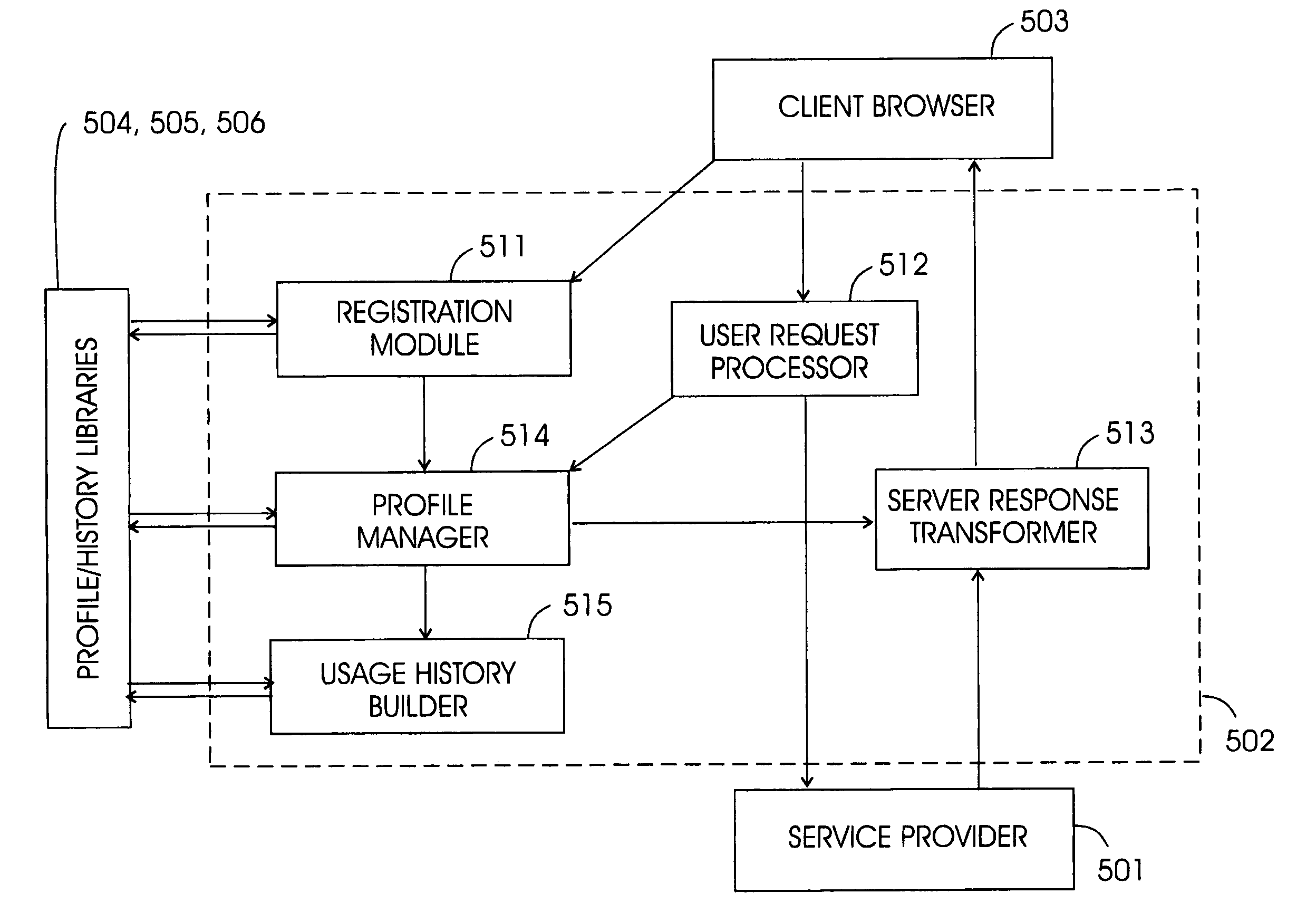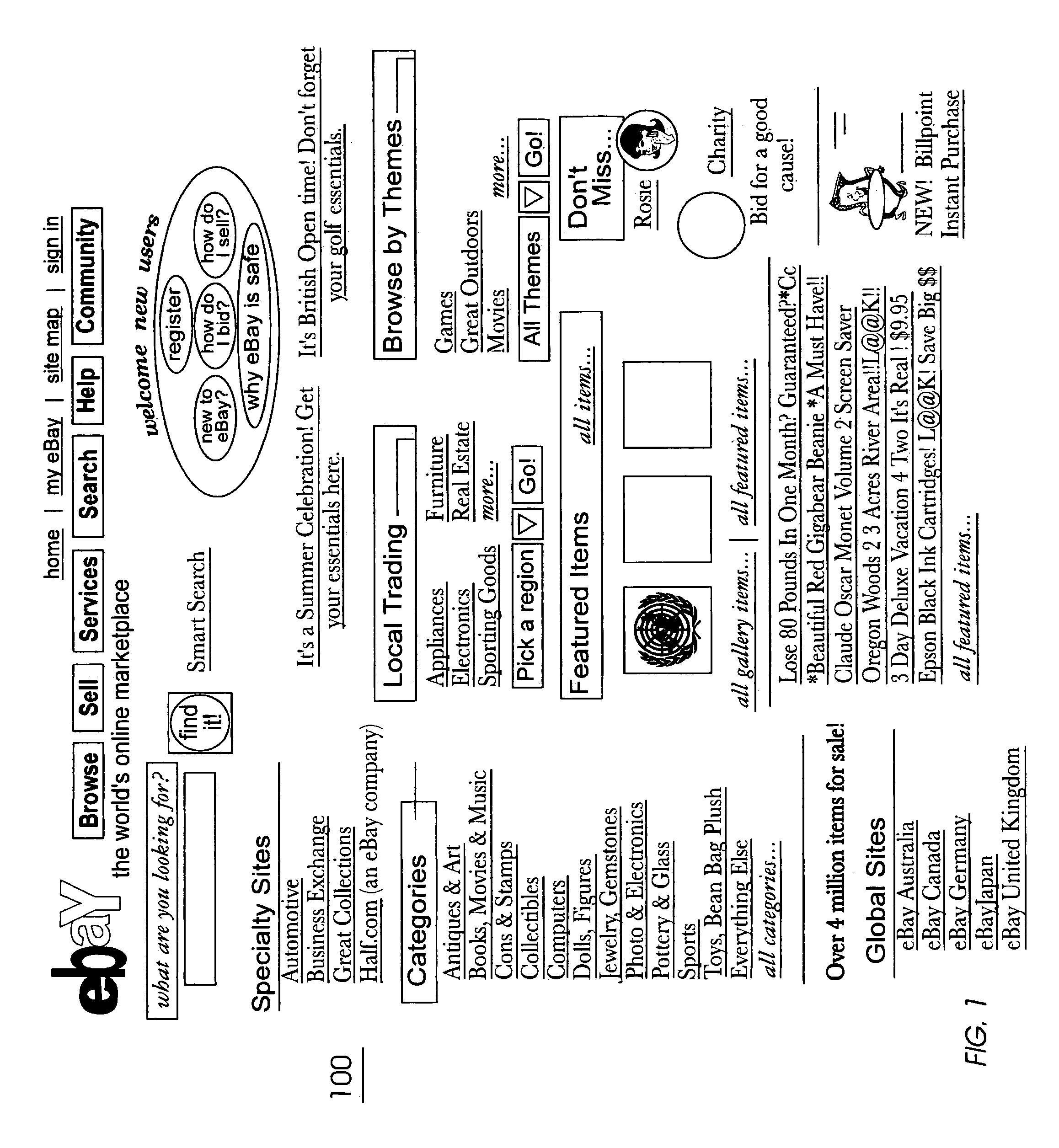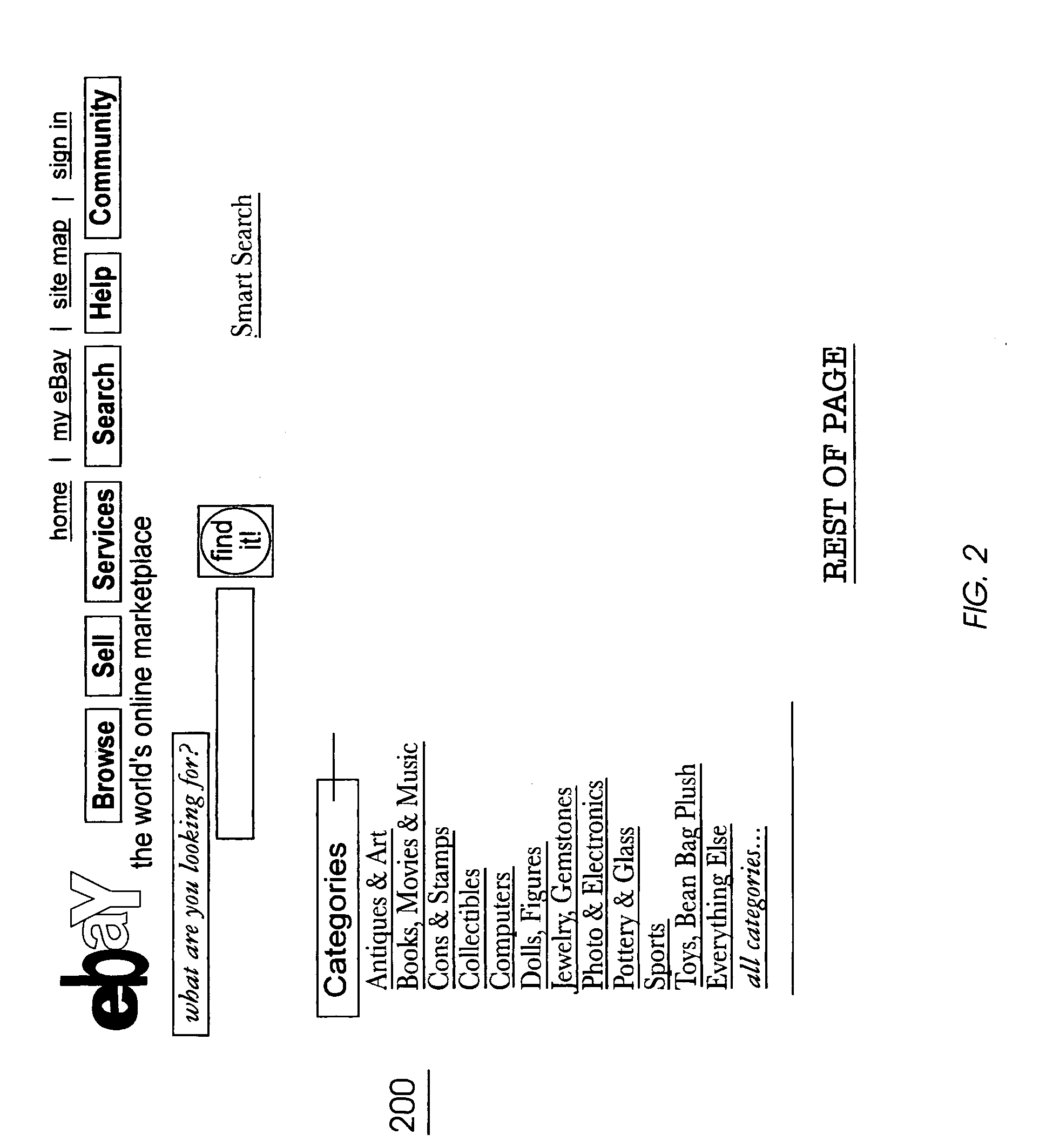System and method for automatically personalizing web portals and web services based upon usage history
a technology of web portals and history, applied in the field of automatic personalization of web services, can solve the problems of wasting browser resources, affecting the service and information of users, and most users who access these sites typically do not care about all of the services and information offered, so as to achieve the effect of saving browser resources, saving browser resources, and saving resources
- Summary
- Abstract
- Description
- Claims
- Application Information
AI Technical Summary
Benefits of technology
Problems solved by technology
Method used
Image
Examples
Embodiment Construction
[0032]Referring now to the drawings, and more particularly to FIGS. 1–10, there are shown preferred embodiments of the method and structures according to the present invention.
[0033]Generally, with the invention, a user visits a web service by typing in the Universal Resource Locator (URL) of the site (e.g., www.ebay.com or www.amazon.com, etc.) and the home page 100 of the website is launched (e.g., see FIG. 1) for display on the user's monitor.
[0034]Upon arriving at (e.g., obtaining) the home page 100, the user performs his or her typical operations. These include clicking on some major links on the site, entering text into a search box, checking a set of checkboxes, etc. The system monitors these inputs and keeps a history of the user's visit to the sites.
[0035]With the unique and unobvious aspects of the present invention, if the number of visits is determined to exceed a threshold (or if the user has manually registered the user's preferences to the system), the next time the u...
PUM
 Login to View More
Login to View More Abstract
Description
Claims
Application Information
 Login to View More
Login to View More - R&D
- Intellectual Property
- Life Sciences
- Materials
- Tech Scout
- Unparalleled Data Quality
- Higher Quality Content
- 60% Fewer Hallucinations
Browse by: Latest US Patents, China's latest patents, Technical Efficacy Thesaurus, Application Domain, Technology Topic, Popular Technical Reports.
© 2025 PatSnap. All rights reserved.Legal|Privacy policy|Modern Slavery Act Transparency Statement|Sitemap|About US| Contact US: help@patsnap.com



